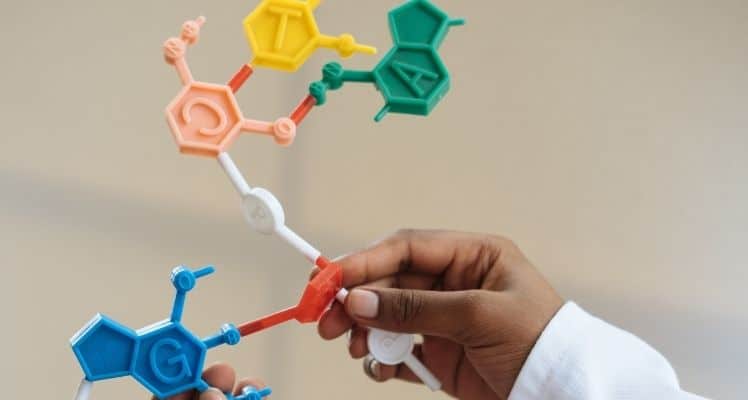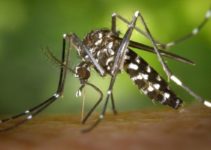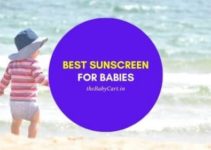23 Toxic Chemicals in Baby & Children’s Products that You Need to Avoid Now!
Are you aware of the fact that mothers are better at researching things than the Crime Branch of India?
Just kiddin..!
When it comes to the safety of their baby, parents are fastest at finding things in anyone in the whole world.
I’m sure you are checking the label, ingredients, and more while buying any baby product. However, are you aware of what ingredients could be harmful to your baby, and to what extent? Any wrong ingredient can affect your baby’s health.
And I’m sure, you don’t want that.
I have come up with a list of toxic chemicals in baby products that you would find even in your kids’ products or even generally in your home products. When it comes to protecting your baby, you have to avoid such chemicals in baby/kids products.
As these can affect the immune system, endocrine system, and the whole body of the baby or kid. As a result, your baby might suffer from issues like learning disabilities, infertility, breast cancer, etc. If possible, you should also avoid these chemicals in direct contact.
Fortunately, by following some steps you can lessen your baby’s or children’s exposure to these chemicals.
23 Chemicals in Baby and Children’s Products!
1. Phthalates
Phthalates are the most common chemicals in baby products which you find in most of the product, like a diaper, plastic, food, and personal care products. These are known to cause reproductive and developmental harm in laboratory animals. In the same way, it impacts humans.
Above all, studies suggest that exposure of the baby to the di-2-Ethylhexyl phthalate (DEHP) and butyl benzyl phthalate (BBzP) can enhance the risk of allergic diseases such as asthma, and eczema.
On the other hand, some studies show that exposure to the BBzP, DEHP, di-butyl phthalate (DBP), and di-ethyl phthalate (DEP) is associated with alternation in infant or toddler’s physical development and parents also report externalizing, internalizing, and autistic-like child behavior.
However, you can see inconsistency regarding some phthalates and domain behavior.
Precaution
- Buy fragrance-free personal care products and cleaners
- Buy baby bottle with hospital grade silicone nipple
- Prevent using plastic food container
Also Read: What is the Citizenship of a Baby Born on an Airplane?
2. Bisphenol (BPA) and Bisphenol (BPA) Substitute
You would find BPA in containers such as sippy cups, baby bottles, and other feeding containers as well as it is also present in canned food liners and plastic food packaging.
BPA is an industrial chemical that has been used to make specific plastics and resins. To be honest, the exposure of your baby to the BPA is easy, as polycarbonate plastic is used in the containers which are used to store beverages and food, like a water bottle.
Even some dental sealants and composites might contain BPA.
Unfortunately, it is harmful to humans as it affects the brain and prostate glands of fetuses, babies, and children. To add, it affects the children’s behaviors too. Apart from this, some research suggests that it also affects blood pressure.
Well, the good news is that according to US Food and Drug Administration BPA are safe at very low levels which is present in some food.
However, it is always better to be a little cautious.
Here are the precautions you can take.
Precaution
- Buy BPA-free products
- Prevent using canned food as much as possible
- If possible, use glass and stainless steel
- Avoid microwaving plastic containers as these can break down with time and leach into the food
Don’t Miss this: Dad’s ‘COMPLETE GUIDE TO BABY’ Video is Absolutely Hilarious. Must Watch!
3. Flame Retardants
As the name suggests, it is varied substances which are added to combustible material that is used to prevent fires. To be precise, it is not a family of chemicals but a function, a variety of various chemicals, with different properties and molecular structures act as flame retardants.
Bedding, car seats, nursing pillows, nap mats, and other foamed baby products are retardants. These flame retardants have long-term effects like lower IQ, fertility issues, cancer, thyroid, endocrine disruption, etc.
Precaution
- Buy bedding which is made of 100% cotton or woolen
- Buy organic woolen or cotton topper to cover the mattress
- Avoid foam products
Volatile Organic Compounds (VOCs) contain varied chemicals that are capable to cause long or short-term health issues irritation in the nose, eyes, and throat, damage to the liver, headaches, etc.
Generally, VOCs are found in wood preservatives, dry-cleaning clothes, pesticides, cleaners, disinfection, pillows, etc. And it acts as a flame retardant.
Precaution
- While using any VOCs product, ensure to have proper ventilation
- Keep it away from pets and kids
- Keep the contains of VOCs product closed
4. High-risk Pesticides
Pesticides have chromic or acute toxic effects that pose risk to children particularly. Above all, it is recognized as a global concern issue.
As the use of pesticide is not limited to a specific area but the whole world is using it which are the cause of health issues and fatalities in varied parts of the globe.
Generally, farmers and public health workers are exposed to pesticides.
However, it also affects the general population through the consumption of pesticides in food or drinking water, the use of hand soaps, bug repellent, disinfecting cleaner, and residues in non-organic produce, are some of the ways you are being exposed to pesticides.
The possible effect of this exposure can result in cancer. That increase by 25% in 1975 according to Pesticide Action Network.
Precaution
- Buy organic food
- Lessen the use of disinfecting cleaner and soap
- Buy bug repellent which contains fewer pesticides
- Go for regular cleaner and soap
DEET is commonly present in repellents as well as used as a pesticide. However, it can cause some serious side effects like birth defects, kidney or liver damage, irritation, and more.
Hence, you really need to maintain a distance from this.
Precaution
- Avoid applying repellent to children under 10 years
- Prevent applying repellent around the eyes, mouth, and hands
- Avoid applying it on wounds or cuts
Don’t Miss: How to Baby Proof the House?
5. Formaldehyde and Formaldehyde Releasers
You would find this chemical in baby care products like shampoo and liquid soap. And according to the National Toxicology Program and the International Agency for Research on Cancer (IARC), the use of the same can result in cancer and human carcinogen.
It is either added to the personal care product directly or released in the product with the time in small quantities from some preservatives.
Precaution
- Read the ingredients before buying a product to avoid formaldehyde, quaternion-15, DMDM hydantoin, imidazolidinyl urea, Diazolidinyl urea, polyoxymethylene urea, sodium hydroxymethylglycinate, 2-Bromo-2-nitropropane-1,3-diol (bromopol), and glyoxal.
6. Talc
Talc is commonly used in products like powder and sprays. Unfortunately, it is known to cause issues like cancer, ovarian cancer, mesothelioma, and continuously inhaling talc can cause lung problems like asthma. Hence, it is advised to avoid the same.
Precaution
- Buy talc-free powder
- When using talc powder, ensure your room should have proper ventilation
- If possible, wear a mask
Don’t forget to check this out: Johnson & Johnson to pay 890 Crore in Baby Powder Case which alleged that it contains cancerous agents.
7. Synthetic Fragrance
As the name implies, the synthetic fragrance is scents that are made of synthetic components. Simply, it is chemically created. Synthetic fragrance is harmful to humans because it is derived from petrochemicals.
Particularly, children are at high risk of the same as they are exposed to the synthetic fragrance through direct contact and by inhaling these.
Personal care products, household cleaning products, scented detergents, lotions, lip gloss, etc contain synthetic fragrances.
Precaution
- Buy unscented baby care products, cleaning products, and more
- Avoid using scented candles
- Buy natural scented products
8. Parabens
Paraben is a preservative that is mostly used in baby care products to increase the duration of the life of the same.
Some health issues that are the result of Parabens are breast cancer, fertility issues, allergic reactions, and also affect the growth of the baby for a few years of life.
Precaution
- Choose anhydrous (without water) products because it will eliminate the need for chemical anti-microbial preservative
- Buy USDA certified products are these are paraben-free and does not contain other chemical preservatives
- Go for natural alternatives
- Buy products which say, “paraben-free”
9. Bleach
Every parent wants the best and safe for their kids, however, sometimes in order to make things right, you might put your baby in danger. Because using bleach to disinfect your baby’s product is the harmful thing itself from which your baby needs safety.
The sole reason is that bleach can result in issues like respiratory problems and skin sensitivity as it can include a volatile compound and other toxic substances.
Precaution
- Go for natural detergent
- Buy products which say, “SLS & paraben-free”
10. Tributyl-tin (TBT)
TBT is sometimes found in disposable diapers, tin can and primarily used as an antifoulant paint additive on docks, buoys, boat hulls, etc. In addition to this, it is also used as disinfections, textile disinfections, fungicidal wood preservatives, etc.
Hence, it is harmful to human beings. As it can result in eye irritation, breathing issues, weakness, tremors, headache, incoordination, and more.
Other than this, it can also result in pituitary gland tumors if you are exposed to the same with a high dose, as well as it can harm your reproductive and central nervous damage.
Precaution
- Buy cloth diaper instead of a disposable one
- Buy organic or chemical-free diapers
Also Read: Toxic Chemicals in Baby Diapers – Study
11. Mineral Oil
Essentially, baby oil is made of mineral oil with added fragrance. That is, by the way, a very frightful blend as mineral oil is a cheap byproduct of petroleum processing.
That acts like plastic wrap on the skin, and also it inhibits the ability of the skin to release toxins.
Mostly, emollients could be used safely without any side effects yet, there is maybe a place for, burning, irritation, redness, and stinging. However, it can get serious like allergic reactions, which include swelling, rashes, severe dizziness, etc.
Though, it is rarely possible.
Precautions
- Prevent using it as much as possible
- Take the advice of the doctor before using it, especially if you are allergic
- Opt natural or organic oil to massage the baby
12. Triclosan
It is a chemical with antibacterial properties that are used in personal care products like soaps, cosmetics, body wash, toothpaste, etc. According to the FDA (2017), Triclosan is not safe for health care settings. Later, it was also banned.
Recent studies show that triclosan can alter hormone regulation in human beings, harm the immune system, and maybe contribute to the development of antibiotic-resistant germs.
Precaution
- Prevent using anti-bacterial soaps and body washes
13. Propylene glycol
It is used in the products because it allows instant absorption by the skin. As it opens the pores to allow chemicals to enter into the skin.
It is generally, used as a wiper fluid and to de-ice airplanes as well as you can often find it in baby wipes.
As a result, it can cause redness, irritation, burning, and stinging.
Further, it can even get worse, though rarely but it can result in allergic reactions, severe dizziness, breathing issues, etc.
Precaution
- Limit the time of using sunscreen
- Avoid tanning booths and sunlamps
- Use homemade disposable wipes
14. 1,4-dioxane and ethylated surfactants
1,4-dioxane is used as a solvent. According to the Environmental Working Group around 57% of baby, soaps contain the same.
Likewise, it is also present in beauty products, though it is never listed as an ingredient.
To be precise, even short-term exposure to high 1,4-dioxane can result in headaches, eye irritation, irritation to nose, throat, and more. Hence, it is one of the toxic chemicals in baby products.
Precaution
- Avoid products that contain the same
15. Lead
Lead is a potent neurotoxin that is known to affect the behavior and growth of the baby. Even if your tot exposed to it at low levels.
According to the CDC, no safe blood level is known that is ideal for the baby.
The major point is, how kids are coming in the contact with lead, well, soil air, and consumer products contain leads. Above all, lead-based paint is the most dangerous for children that also include drinking water.
Not only this, but the food can also be the source of exposure to your kid to the lead.
As the effect of the lead can not be reversed, you got to take preventive measures.
Precaution
- Check the pipes for the lead service line, to prevent the exposure of lead in drinking water
- Use filter
- Let the tap water at least run for 5 seconds before using
16. Perfluoroalkoxy Polymer (PFAS)
These chemicals can easily migrate in the dust, air, food, water, and soil. Even you and your baby can expose to these chemicals through food packaging and industrial exposure.
These chemicals have adverse effects on human health like liver damage, high cholesterol, cancer, obesity, decreased fertility, and more.
Precaution
- Use filters water
- Avoid food packing as much as possible
17. Benzyl Acetate
Benzyl acetate is usually present in personal care products because of its sweet aroma. With that, it is also used as the solvent in plastics and resins, oils, polishes, inks, etc.
It could be hazardous and can cause dizziness, drowsiness, dry skin, redness in the eyes, and more.
Also, it is combustible.
Precaution
- As it is combustible, hence, use it in a well-ventilated room
- Try to avoid personal care product which contains the same
18. Glycol ethers
Glycol ethers are present in glass cleaners, all-purpose spray cleaners, liquid soaps, and cosmetics. These are very dangerous as acute exposure to these can cause low birth weight, kidney damage, narcosis, decrease fertility, and more.
Precaution
- While using spray or cleaner, ensure to have proper ventilation
- Also, wear eye protection when using spray or cleaner
- Avoid inhaling vapors and contact with the same
19. Monoethanolamine (MEA)
MEA is generally used in detergents, polishes, emulsifiers, cleaners, and more. And are also linked with health issues like asthma, and other respiratory issues.
Also, it also causes eye irritation, restlessness, etc.
Precaution
- Ensure proper ventilation while using sprays or cleaners
- Use organic or natural detergent
20. Sodium Laureth Sulfate (SLS)
Sodium Laureth Sulfate is an anionic surfactant commonly found in household cleaning products like cosmetic products, laundry detergents, dishwasher detergent, spray cleaner, shampoo, etc. Here, it causes cancer, eye irritation, cause acne, and more.
It is also one of the harmful chemicals in baby products mostly in shampoos and other products. You can check out Mother Sparsh Products, these are really good.
Precaution
- Prevent buying cosmetic products which contain Sodium Laureth Sulfate
- Buy organic or natural detergents or cleaner
21. Polyvinyl Chloride (PVC)
Commonly, terms as vinyl which is found in household items like wallpaper, toys, and shower curtains.
Additionally, it affects health in varied ways such as cancer, immune system damage, kidney damage, respiratory issues, hormone disruption, etc. Hence, it is one of the harmful chemicals in baby products.
Precaution
- While using products with this chemical ensure to have proper ventilation
- Cover your face to prevent inhaling
22. Oxybenzone
It is found in sunscreen which can result in low birth rates, cell damage, allergies, and hormone disruption. Apart from this, it is also present in cosmetics and sprays.
Precaution
- Buy sunscreen which does not include the same
- Instead of applying sunscreen, you can cover your body
23. Perfluorooctanoic acid (PFOA)
PFOA commonly found in non-stick cookware, stain-resistant carpets, and other products that resist heat, oils, stains, water, etc. Additionally, it results in health issues like cancer, developmental harm, and more.
Use food blenders or maker for baby. Use should also use baby bottle sterilizers as there are much more effective in killing the germs.
Precaution
- Lessen the non-stick cookware as much as possible
- Prevent the use of products that resist heat, oils, stains, water, etc
Conclusion
At last, I would say, completely eliminating each and every chemicals in baby products or from your life could be tough. So far we have found these 23 toxic chemicals and might be the list is more.
Don’t forget that some of these chemicals are added in a limited amount but you should be aware of all the things. Don’t blindly follow any brand without checking its authenticity, features, ingredients, etc. Also, avoid trusting all the marketing strategies that these big brands do.
I’m not against with any brand but safety is in your hand only.
However, “where is a will, there is the way.” By saying this, all I mean is that you can try to keep your baby away from these harmful chemicals simply by taking some precautions.
I hope you have found this article on toxic chemicals in baby products helpful. If yes, please share this information with your friends and other family members.
Spread awareness & be safe!



